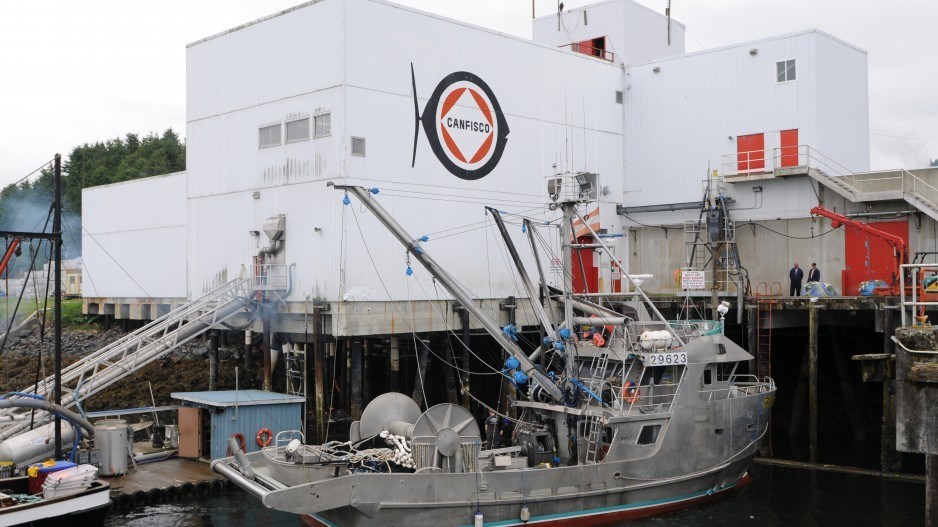The B.C. government’s new wild salmon strategy is a missed opportunity, says the executive director of Skeena Wild Conservation Trust, because it does not contain strong enough measures in the one area where the province has jurisdiction: habitat protection.
And the BC Wildlife Federation is concerned that, if the government adopts recommendations of the Wild Salmon Advisory Council, B.C. may follow Alaska on an over-reliance on hatchery production – something which itself may be one of the problems contributing to decreases of certain wild stock species.
It also fears that the report appears to support selective culling of seals and sea lions.
The government-appointed Wild Salmon Advisory Council has submitted its final recommendations for addressing a decline in wild salmon stocks to the provincial government.
It makes 13 recommendations, with three main goals:
• increase wild salmon abundance;
• protect and enhance economic, social and cultural benefits from wild salmon and other fisheries; and
• engage citizens and governments in stewardship and management of B.C.'s wild salmon.
The province is limited in what it can do to protect or bolster salmon stocks, since that is largely a federal jurisdiction.
The one area where it does have power is in protecting salmon habitat in streams, lakes and riparian areas.
But Greg Knox, executive director, Skeena Wild Conservation Trust, said the recommendations falls short in that regard.
The report does contain recommendations for habitat protection and restoration. One recommendation is “actively enforcing existing provincial laws and regulations.”
In other words, the province already has laws for habitat protection that apparently aren’t being enforced.
Knox had hoped to see stronger statutory measures recommended that would require decision-makers in ministries that deal with forestry, mining and industrial to place greater emphasis on salmon habitat protection.
“For decades, the federal government has been managing salmon, but they have had no authority over protecting their habitat,” Knox said. “That’s fallen under the province, yet the province has never had a strategy to protect salmon habitat. So this was a key opportunity to deal with that issue, and this panel has failed to do that.
“They’ve focused instead on industry – so the commercial and sport fishing industries – and boosting production through hatcheries, which harm wild salmon.”
Al Martin, a director for the BC Wildlife Federation, says some of the recommendations in the strategy around habitat protection and restoration is “very good.”
But he shares Knox’s concern that one of the tools being suggested for bolstering salmon stocks is “enhancement” – i.e. salmon hatcheries.
There is mounting evidence that the massive amounts of pink and chum salmon produced by commercial hatcheries in Alaska is having a negative impact on other wild salmon species.
Increasing hatchery production in B.C. would simply increase competition with wild salmon, and result in reduced genetic diversity, Martin said.
“I think the North Pacific is seeing the effects of international efforts to improve returns of salmon – particularly pink salmon and chum salmon – and there may be issues of over-stocking," Martin said.
It is particularly worrisome if the goal is to boost stocks that are more commercially valuable, like sockeye and pink, rather than species like chinook.
Martin said small-scale hatcheries to enhance certain stocks that are threatened is reasonable, but said larger scale “ocean ranching” to boost stocks for commercial purposes is a bad idea.
He also has concerns over a recommendation that selective culling of seals and sea lions be considered "where pinniped populations or problem animals are threatening wild salmon rebuilding efforts."
There has recently been a push, including among First Nations, to reduce the sea lion and seal population in order to address dwindling Chinook populations, which has largely contributed to a decline in the Southern Resident Killer whale.
Martin said seals are prey for transient killer whales. So a cull that is intended to protect one type of killer whale could have a negative impact on another type, he said.
“So are you going to control seals and accept the consequences of reducing populations of endangered (transient) killer whales?” Martin asked.
“There’s a lot of good things in the report,” he said. “But I think that some of the emphasis is misguided, particularly in terms of ocean ranching, predator control and the whole lack of an eco-system approach based on good scientific evidence.”




